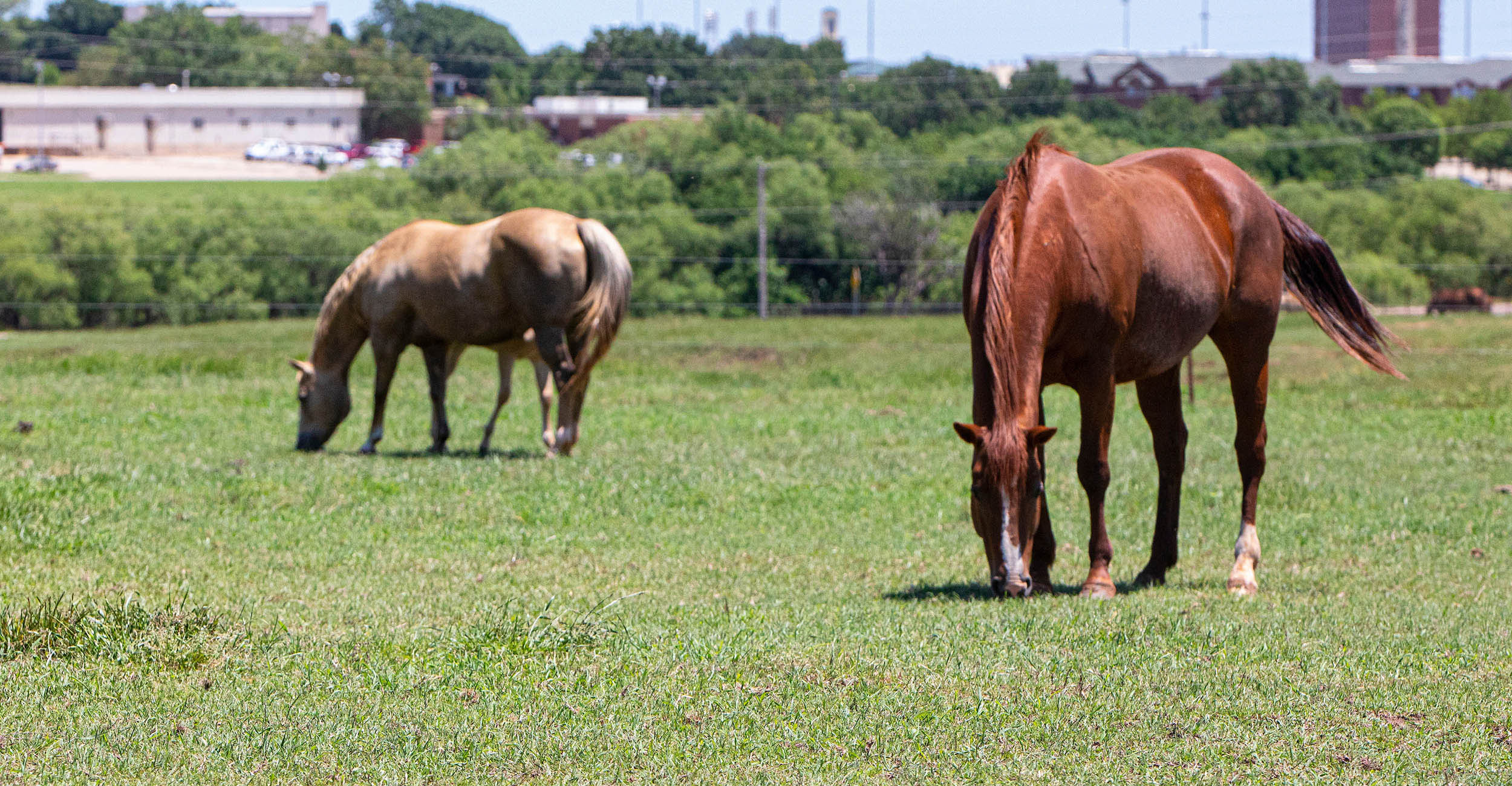
Keep watch on obese horses eating green forage
Tuesday, May 18, 2021
Media Contact: Donald Stotts | Agricultural Communications Services | 405-744-4079 | donald.stotts@okstate.edu
Obesity in horses is never a desired condition, but especially so for animals that have developed equine metabolic syndrome (EMS), a condition similar to Type II Diabetes in people.
Springtime can be especially hard for horses that suffer from EMS because the disorder is associated with insulin deregulation that can promote increased fat deposition and a reduced ability to lose weight, said Kris Hiney, Oklahoma State University Extension equine specialist.
“The lush forage that greens up during the spring is a lot like candy to horses, both in terms of palatability and how its sugar content is higher compared to other times of the year,” she said. “Even metabolically normal horses can gain a lot of weight if left to eat as much as they want. Horses with EMS that overeat spring forage can find themselves with hyperinsulinemia, an increase in insulin beyond what you would see in a metabolically normal horse.”
EMS typically occurs in middle-age or older horses. Horses with insulin deregulation can easily develop laminitis, an extremely painful condition. Named for the disruption of blood flow to the laminae structures within the foot, the problem can affect one or all feet, but is most often viewed in the front feet at the same time.
Fighting the battle of the bulge can be a challenge. Equine management options include:
- Limiting the amount of time horses are turned out on green pasture.
- Increasing control over unwanted foraging by placing the horses in drylots.
- Using grazing muzzles, if necessary, as they allow the horse to only take small bites of food at a time.
Hiney recently provided additional insights about managing obese horses on the agricultural television show SUNUP. The video segment also is available on YouTube.
“Horses, and ponies in particular, can develop a sense of how long an equine manager is going to leave them out on pasture,” Hiney said. “Once they learn the horse manager is going to take them off before they prefer, they adjust by eating faster. The horse manager has to account for their behavior because they love that yummy springtime grass.”
OSU Extension recommendations are for all horses to get plenty of exercise. Fact sheets detailing research-based information about developing exercise and related feed programs for horses are available online through OSU Extension and at OSU Extension county offices.
Horses suffering from foot problems such as laminitis should not be exercised until symptoms resolve. Hiney recommended owners of such horses should consult with their local veterinarian to develop the best possible animal health and well-being program for each specific horse.
“As with people, a sedentary lifestyle combined with an unlimited buffet is not a good combination,” she said. “Obesity in horses is a condition that can creep up on an equine manager before he or she realizes it, so be vigilant.”
Other problems related to obesity aside from insulin deregulation include joint health and thermoregulation, or the ability to stay cool. Unwanted weight can greatly reduce an animal’s ability to perform and have a long, productive life.
